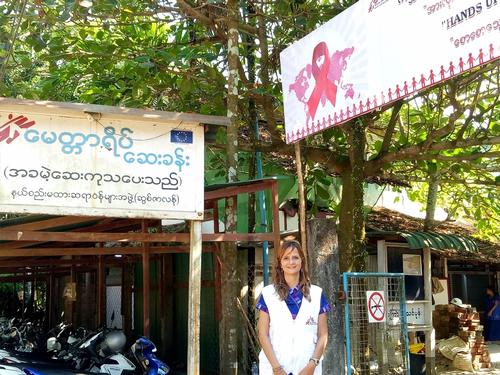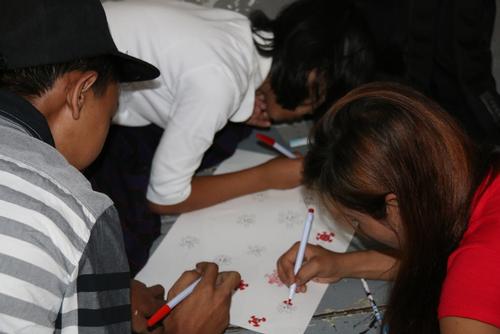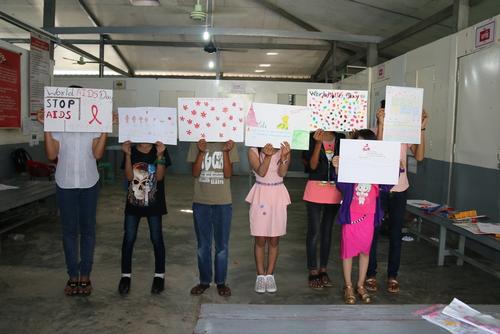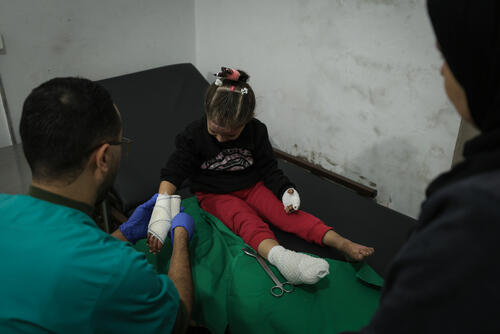Fernanda Rick, medical team leader for MSF's HIV project in Dawei, Tanintharyi region, gives some insight into MSF's work with HIV-positive adolescents in Myanmar.
HIV-positive adolescents (defined by the World Health Organization as young people between the ages of 10 and 19) are particularly vulnerable but are a group that are often overlooked in the HIV response – globally, regionally but also within our own MSF HIV cohorts. In Myanmar, adolescents make up around five per cent of our total HIV cohort of nearly 35,000 people.
Falling into the gap between child- and adulthood, this group has distinct needs and faces a unique set of challenges when it comes to HIV, both in terms of prevention and treatment. This is complicated as it requires particular attention and is thus often neglected in HIV programming – with harrowing results. The number of new infections and AIDS-related deaths in this group are on the rise in the Asia and Pacific region, and according to the recently released report Get on the Fast-Track - The life-cycle approach to HIV by UNAIDS, adolescents living with HIV have the highest rates of poor medication adherence and treatment failure.

A review of our HIV cohorts in Myanmar indicates a similarly concerning picture: our adolescent patients are almost three times more likely to fail on first-line anti-retroviral (ARV) treatment than their adult counterparts and will need to be switched to more potent drugs (second-line ARVs). While only about six per cent of our adult patients are on second-line medication, the percentage climbs to 16 per cent in the adolescent group. This is particularly tragic, as preliminary research indicates that adolescents actually start treatment in better health and achieve higher CD4 counts once they are on therapy compared to our adult patients. But what is even more worrying is the fact that the second-line drugs do not seem to be as effective. Looking at the last viral load results of all tested adolescents (about 90 per cent of the total adolescent cohort), we see that almost 20 per cent of adolescent patients on ARVs still have a detectable viral load in their blood – an indication that suggests the treatment alone is not working.
We can't put our fingers on exactly what the reasons are for the high failure rates in this specific group of patients – but it is something we are also seeing in HIV projects in contexts other than Myanmar. Likely, it is a tragic combination of determinants unique to young adulthood in general and social and environmental factors, including context related stigma, in particular.
Young people all over the world are struggling; oscillating between happiness and depression, confidence and self-doubt, romance and heartbreak. For many HIV-positive adolescents this roller coaster ride includes additional loops. Most of our young patients do not dare disclose their status to anyone outside their family, not even their closest friends. They are often ashamed and scared that their friends would desert them if they knew about their infection. They suffer from the 'rules' (a most-hated word in a teenager's vocabulary) that come with being HIV-positive. The routine of having to regularly do something like take medication (and do so unnoticed by your peers at a time in your life when you have a million other things on your mind) poses a challenge to ARV adherence.
There are also a number of social and cultural components that make adolescents vulnerable to treatment failure. The majority of our young patients were born to HIV-positive parents and many of them grow up as orphans. In a sample of 177 HIV-positive adolescents aged 10 to 19 in our Dawei cohort, 67.4 per cent report being orphans, having lost both parents (18.6 per cent) or living in a one-parent household (48.8 per cent). In Myanmar, ARVs only became available in the public service just over 10 years ago, but even then access remained extremely limited. So the parents of the children we are treating today were likely not part of an ARV programme when they were born and many have since died. Becoming a breadwinner thus often becomes an early responsibility for their children and, in fact, almost 30 per cent of the youth in our sample group indicate not attending or not having finished school.
Growing up in orphanages or with other relatives, often a grandparent, doesn't make it easier for adolescents to deal with HIV infection whilst undergoing a whirlwind of emotions, as well as physical and psychological changes. Disclosing their HIV status to them is a sensitive issue, yet a highly important one. Growing up with a chronic life-threatening disease, kids need to understand why they need to take their drugs rigorously: it is the key to making them adherent. Sexual education is another major issue. However in Myanmar, like in many other societies, talking about sex is a cultural taboo. So it is already difficult for young people to learn about the joys, risks and responsibilities that come with having an active sexual life. But it becomes even more difficult to navigate when growing up without parents or when the main adult to ask and confide in is two generations removed.

The list of challenges goes on and on. The bottom line, however, is something that we all as HIV care providers but also as caregivers, parents, teachers and human beings should take to heart – that HIV-positive adolescents need a supportive environment with people who understand them and who help them adhere to treatment. They need a specially tailored model of care that allows them to be normal teenagers. This includes having HIV counsellors and other educators who speak their language, who do not shy away from including sexual education in their interactions, and who take young patients seriously. Teachers who do not discriminate against kids when they disclose their status, but allow them to take their pills during school hours and pass messages of support and HIV education in their classrooms; families and communities who understand methods of transmission and prevention and do not refuse to eat from the same plate or wear their clothes.
In MSF, we still need to better understand the challenges that lead to possible barriers to ARV adherence and higher failure rates in HIV-positive adolescent patients. We have increased efforts in our HIV projects in Myanmar to better address and care for this unique group of patients. This includes research into our existing cohort, as well as closer monitoring of virological outcomes. Better adapted counselling and an increase in peer support activities, as well as targeted outreach in testing and health education are possible next moves. However, as treatment providers, caregivers and humans we need to make this a combined effort and we need to do this urgently to ensure a future for the next generation and not let them slip away.
MSF has been providing antiretroviral (ARV) treatment in Myanmar since 2003 and currently runs HIV/TB projects in Yangon, Shan and Kachin states, as well as in the Tanintharyi region. Up until September 2016, MSF had provided ARV treatment to 34,877 patients in these projects, 1,807 of whom were aged between 10 and 19 years of age.






